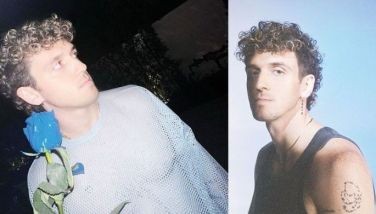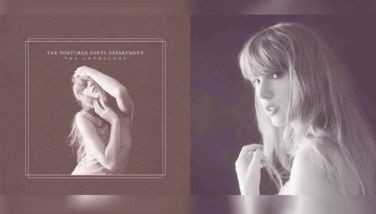Take a look at New Orleans at ground level
MANILA, Philippines - Sandy, Isaac, Irene, Katrina. In recent years, the US has been irrevocably shaped by hurricanes. With my home state of New York still picking up the pieces in Sandy’s aftermath, the story of that other great American city and the storm that ravaged it has never seemed more relevant. HBO’s Peabody Award-winning series Tremé (airing Monday nights at 10 on HBO Signature) explores New Orleans’ slow and painful recovery in the years following Katrina, and the spirit and culture of the everyday people fighting for the city they love.
In contrast to many dramas, which focus on one or two larger-than-life people and a cast of minor characters that blend into the background, Tremé takes the opposite approach. There is no protagonist, no single awe-inspiring figure that the show revolves around. Rather, it is a true ensemble. Every arc is given equal weight, and the characters aren’t the wealthy, powerful elite of New Orleans, but musicians, civil rights lawyers, chefs, business owners, contractors and policemen.
“We’re looking at New Orleans at ground level,†says series co-creator Eric Overmyer. “These are ordinary people in an extraordinary place, and in extraordinary circumstances. And nobody’s the mayor, nobody’s the police chief, nobody’s the kung fu vigilante.â€
Creator David Simon says: “Because in some ways, I believe the story of that city is gonna end up being (that) the heroes, the protagonists of the piece — that’s actually who it is in New Orleans. Political leadership didn’t bring the city back, and there wasn’t any powerful economic fiat to restore the city. What there was was ordinary New Orleanians who were unwilling to relinquish this place that they knew. They couldn’t imagine living elsewhere.â€
The end result is a series that at times feels chaotic and raucous, much like the city itself. The focus switches abruptly from a clash between musicians mourning the loss of one of their own through a soulful Second Line musical performance and the police officers serving them noise complaints; to the fish-out-of-water story of an exiled New Orleans chef adjusting to the rarefied atmosphere of the New York culinary scene while longing for home; to a former street musician and reformed drug addict’s courtship of the daughter of the Vietnamese fisherman for whom he now works. It’s not one story, but about a half dozen, and that all happens within the first episode.
But I think that’s the point. What better way to get a sense of a place, then is through the eyes of its people. These glimpses, flashes really, of tangentially connected lives, the stories of personal triumph and tragedy add up to a city in turmoil, struggling but not without hope.
The thread that ties everything together is the lifeblood of New Orleans: Its culture. In a city rife with corruption, from federal disaster relief dollars held up in endless arbitration to police cover-ups of murders to houses that are rebuilt only to be torn down later, New Orleans has had more than its fair share of problems. But the one thing that keeps it going is its culture.
“It’s the only thing that works,†says Simon. “And by the way, Americans don’t exactly regard themselves as being a particularly cultural lot, but we are, everybody is, every country is. And New Orleans is not a museum piece, it’s not just like, well, we have these old traditions and we hew to them. Fresh music, organic, like you’ve never heard it before, is being created every day down there. It’s not a museum. But, they hold onto tradition, and they use tradition. They use it as currency. And in doing so they’ve created extraordinary art.â€
“In some ways, I felt like this was the missing component from The Wire (Simon’s earlier HBO series focusing on Baltimore, Maryland) that I was really hungry to get to, personally. Because I live in Baltimore, and I’m invested in the city and its future — and people who watch The Wire (ask), ‘Well, why don’t they just leave? That place is doomed.’ And we were not speaking specifically to Baltimore, we were speaking about forces at work that were threatening the American experiment, because we’re an urban people. And how we figure out how to live in cities and what we make of our cities — that’s the question for us going forward. The idea that you could just walk away from an American city — probably the closest example is Detroit — is shocking to me. New Orleans’ school system is a mess. The police department reached its nadir during the storm. It’s one of the most hopelessly corrupt cities in America. Nothing works, the infrastructure’s laughable... The city has all these problems, and yet, it represents in some ways the American potentiality as an urban people. What have we created that will be more of an enduring legacy than African-American music, than jazz and blues, heard around the world?â€
New Orleans native Wendell Pierce, who portrays trombonist Antoine Batiste, stresses that the culture of the city isn’t merely art for art’s sake, but brings real, concrete benefits to the community. “I had a great sense of responsibility (when the show began), but after a few months folks really embraced the city and really started to understand how important culture is to us, and how much it’s a part of everyday life. The food, the music... I would call home to my mother and say, ‘How’s your day?’ and she would say, ‘Oh, it was great. I had shrimp creole with some okra...†You describe your day by the meal that you prepared. There is music at every event of our life. And it’s tangible, that’s the thing that I hope people see. The social aid and pleasure clubs came out of an ugly time when black folks in segregation couldn’t get insurance, couldn’t get burial plots, so they pooled their money in an old African tradition. If your mother takes sick, here’s something, if your father dies, we’re gonna send him off nice. We’re gonna get the music, we’re gonna do a dirge to the cemetery and come back in celebration. The family is the First Line. All the mourners behind them are the Second Line, and it’s a celebration going back, with Second Line.â€
“Also once a year, those social aid and pleasure clubs actually would have a Second Line not connected to a funeral, but just a parade. And you stopped at members’ houses, and members’ bar rooms and restaurants along the route, and it just brought commerce into the neighborhood. You’re buying food off the trucks behind you and something to drink, and it’s also taking people through the neighborhood and bringing people there. It was a way to raise money and bring commerce, just a grassroots economic engine. It’s a social aid and pleasure club; we understand the pleasure part. It’s fun, we’re dancing. But then you start to see that it actually came out of a very tangible, working, logistical social network.â€
Tremé has been embraced by the people of New Orleans as a loving but honest depiction of their city, warts and all. For some residents, the enormity of what they endured during and after Katrina only hit home when they watched its depiction on the series. “On Sunday nights, you could go around the city, and there’s different watch parties all over. They’ve invited us to a couple, I’ve gone to a couple where people get excited about seeing the cast come. They watch the show, and it’s almost like group therapy because they’re reflecting on events that they’ve gone through, just a few years in the future, looking back. It gives them hindsight. ‘Wow. Well, I am further along than I was. It’s a reminder of what I’ve come through. I still have further to go.’ So it helps people remember. There was one instance where a guy tells me, ’I didn’t realize how much I hurt about losing my house until the first time I saw Clarke (Clarke Peters who plays Big Chief Albert Lambreaux) walking through his house. It was just the noise of his feet in the mud in his house, and it was like sense memory for me. I broke down and started crying.’ Because that was the noise that just disturbed him the most. To walk into his house, and walk into sludge, and it set off something in him. So it’s very emotional and therapeutic for people at the same time.â€
But Tremé’s fan base extends beyond the New Orleans area, according to Overmyer. “I actually know a couple of people from the West Indies here in New York, and they tell me — and I don’t think they’re lying to me — that the show’s popular in their community and back home as well. And they’ve said to me, ‘It reminds me of home.’ I see people in the street parading like that, that’s what we do at home.â€
Pierce attributes Tremé’s broad appeal to the nature of culture. “The more specific you are about culture, the more universal you become. The more specific you are about your journey, people identify the humanity in it, no matter where they are in the world. That’s the thing that connects us. There is this humanity that we all share in our cultures, that it automatically connects when it’s truthful and it’s authentic.â€
“I was in Thailand doing a movie in the late ’80s, and I spent the night-out on a beach in Phuket. I spent the whole night-out and slept on the beach, and that morning I heard this dirge. And I look up, and it’s this huge funeral procession. Very Buddhist, very slow. But they had music and a dirge. Wow, that was beautiful. Sad, just passed. I’d been drinking, I passed out again on the beach. And then about a half hour later, everybody came back and they were dancing. And I woke up again and it was the same procession coming back, and I said, ‘Wait a minute. That’s the Second Line! That’s the jazz funeral.†And I realized, here I am in Phuket, Thailand watching the culture that these people demonstrate, where I connect with it immediately. Because that’s the role of culture. What thoughts are to the individual, where we reflect on who we are? Culture is where we communally reflect on who we are. Celebrate life, deal with our disappointments, deal with our fears, summon courage. We’re here to collectively remind ourselves of the values of what’s important. And that’s the role of culture and art.â€
- Latest
- Trending
































